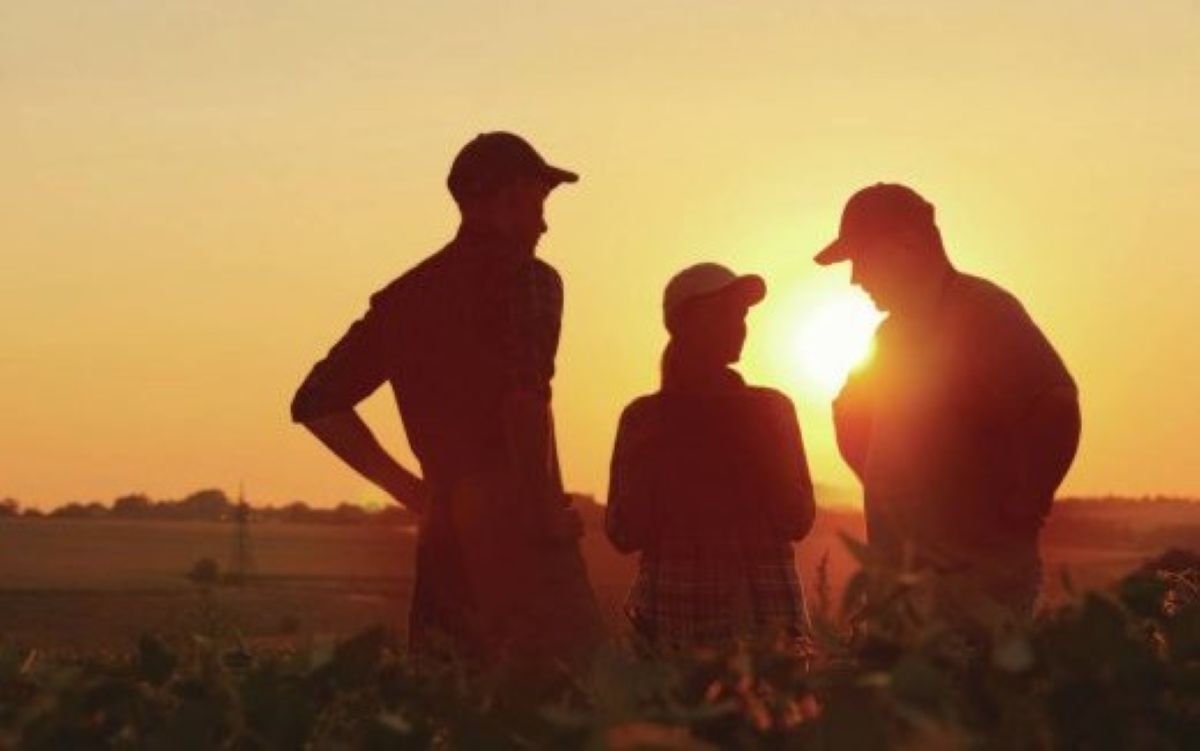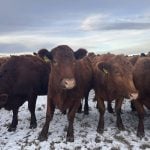Nearly everyone has climbed on the bandwagon, including economists, extension agents, consultants, policy advisers, and every level of government. They all see value-adding as the solution to the economic and social problems facing primary agriculture.
David Bressler at the University of Alberta goes as far as stating, Value-adding is the ONLY solution to problems faced by small and mid-sized farms.
But there s one big group that hasn t climbed on board. They re the farmers.
In fact, a 2009 Iowa State Farm Poll found only nine per cent of the Midwestern U. S. farmers are involved in value-adding enterprises. (See table)
Read Also

The Secret Sauce of Sibling Run Farms
Working with family can be difficult, but successful sibling agricultural operations seem to leverage the unique advantages of their relationships to create growth for their farms.
So, the question has to be asked. When there are so many people telling farmers about all the benefits of value-adding, why aren t farmers more receptive to this strategy? The answer appears to be that value-adding is a lot more complex than it is often portrayed to be, and it may not be quite the cure-all for agriculture s problems that its supporters say. Let s take a critical look at the four biggest claims made by proponents of value-adding.
Myth #1: Value-adding reduces risk
Fact: Value-adding is a business venture and carries the same risks as any startup business.
In compiling Iowa State University s farm poll on value-adding, extension sociologist Gordon Arbuckle found that the major reason farmers give for not participating in value-adding is perceived risk.
In many rural areas there aren t a whole lot of opportunities to add value, Arbuckle says. There isn t a market for products other than unprocessed major commodities. It is tough to find buyers other than for the major crops and livestock. And even if there was a market, value-adding ventures tend to be expensive, capital and labour intensive, and high risk.
Other analysts agree. Michigan State University s website on value-adding in agriculture is blunt: The USDA estimates that at least two out of every three new food products introduced into the market fail due to lack of customer appeal. Only one in five new businesses succeeds for more than five years. Failure to do market research and the lack of a sound business plan are leading causes for failure.
The aversion to adding additional risk to a farm operation is so great that Arbuckle found 70 per cent of producers surveyed said they would rather take an off-farm job than start a value-added enterprise.
Myth #2:
Value-adding increases commodity prices
Fact:The opposite is true. Any value-added product can become a commodity if too many other producers get involved. The price of the base commodity doesn t go up. The price of the value-added product goes down.
Without question, a successful value-adding enterprise can significantly increase farm returns. For example, as the North American hog industry was crumbling due to low pork prices, sliced Jamn Ibrico de Bellota ham was being sold for $49.95 for 4 oz. (112 gm) in the U. S.
This specialty ham comes from free-range, acorn-finished, black-footed Ibrico hogs raised on farms in a specific area of Spain. Furthermore, the hams have been dry cured for 24 to 48 months in the mountains near Salamanca before being shipped to the U. S. for slicing and sale.
This strict attention to genetics, feeding and processing gives the value to Jamn Ibrico de Bellota. Most importantly, only those who produce this exact product share in the benefits, not the hog industry or hog prices in general.
Arbuckle points to economic theory saying that, on average, profit margins of commodities trend toward zero over time. Producers of commodities must increase production and efficiencies as margins narrow. High-cost and inefficient producers are forced out of business. As a result, the supply of a given commodity typically increases in spite of commodity prices trending down.
And, as the University of Alberta s David Bressler says, There are other areas of the world that have more energy, cheaper labour, and lower production costs and will always be able to produce commodities at lower cost that we can.
The Ohio State University Extension Fact Sheet Direct Marketing as a Value-Added Opportunity for Agriculture states: Value-added agriculture does not and probably never will increase commodity prices, but it can add value to those products by performing activities usually performed by others. So the benefit comes from the value-added activity performed, not by increasing commodity prices.
However, even value-adding by the creation of a unique product is no guarantee of long-term profitability. Rod Bradshaw has successfully diversified his Innisfail, Alberta family grain and livestock operation by growing potatoes, carrots, cabbages and other vegetable crops. He adds further value to the operation by processing, branding and marketing these table crops directly to the consumer. Bradshaw says: Not everyone can do what we do, or no one would make money!
Myth #3: Value-adding creates markets
Fact:For value-adding to succeed, there must be real, sustainable demand for a differentiated product that offers a new value proposition.
Within one year of the discovery of BSE in Canada in 2003, 18 new, major, federally inspected slaughter plants were under development. Planning and construction of these largely producer- owned facilities was driven by the perceived need of ranchers to slaughter the more one million-plus head of Canadian cattle that used to be exported to the U. S. for slaughter before the border was closed.
Today, only one of these 18 facilities is in operation and it is only killing about 120 head per day.
Many cattlemen believed that operating their own slaughter facility would essentially guarantee a market for their cattle, and that by processing the beef themselves, ranchers would capture higher prices for their cattle. What they didn t plan on was that instead of the proposed value-added facilities meeting actual market demand for an identifiable product, these facilities were simply transforming one commodity (i. e. live cattle) into another commodity (i. e. boxed beef). This new processed commodity still had to be sold into an undifferentiated, competitive market.
Worse, the existing multinational slaughter facilities that these new plants would have to compete with had competitive advantages in trained workforces, efficiencies of scale, and access to retail markets.
Instead of value-adding on the basis of demand pull for a product which maximizes the selling price of a product, cattlemen were planning and building on the basis of the supply push of the raw commodity, which minimizes the selling price of that commodity.
Not only did cattle prices not go up, but desperate producers lost millions of dollars of investment in failed plants.
Now, the ethanol sector may share at least some elements of the same storyline.
Many crop producers see bio fuels as the saviour of field crop agriculture. Of the nine per cent of the farm poll respondents in Iowa State who indicated they were involved in a value-adding enterprise, nearly half were involved in biofuel production, often as investors in large, co-operative ventures.
At first glance it would seem this is value-adding that has to work. After all, there is demand pull for this value-added product. Or is there?
In fact, there is very little consumer demand for ethanol. Ethanol demand is actually generated by government policy calling for the addition of biofuels at the pump. In truth, most consumers could care less if the fuel they pump in their cars comes from out of the ground or out of the field.
Consumers just want affordable fuel. And on this critical attribute, ethanol actually comes up short. Currently the U. S. is subsidizing ethanol production by US$6 billion per year.
What will happen to the biofuels industry if today s world fiscal problems force the end of the subsidies or if government policy changes and biofuels are no longer mandated? Already dozens of ethanol plants have fallen victim to the high grain prices of 2007-08 and the current recession.
The story gets worse from there. Not only is ethanol having to battle for market share mainly as a commodity rather than a differentiated, value-added product, it is also having to fight several rear-guard actions against reports which say it is harder on engines than petroleum-based fuels.
Bressler expects to see ethanol replaced with better alternative energy sources in as little as 10 years. That leaves a very short time span for grain growers to recapture their investment in this value-added sector.
Myth #4 Anyone can value-add
Fact:Successful value-adding requires special skills, resources, and most importantly a passion for the venture.
Probably the biggest myth perpetuated by the supporters of value-adding is the assertion that anyone can value-add. While technically this may be true, in reality value-adding requires most farmers to acquire a whole new set of skills and resources.
First and foremost, a producer must be able to identify a need in the marketplace and then develop, produce, and market a product which meets that need, sometimes marketing directly to the consumer or other end user. Such true entrepreneurship is a major stretch for most growers who typically grow the same crops year after year and simply sell them to one of the few remaining buyers of the crop.
Second, all value-added enterprises, from small, direct-marketing operations to large-scale industrial processors, require a great deal of communication and cooperation for successful production and marketing of a product. As the rural community shrinks due to farm consolidation, the result is fewer but more self-sufficient farm operations, and the amount of cooperation between farm operations is decreasing.
Arbuckle believes farmers are becoming less and less dependent on each other. Farmers are accustomed to working on their own, Arbuckle says. Also, with the decrease in farm numbers, you have to cast your net wider to find enough farmers to collaborate.
Depending on the venture, Arbuckle adds, it might be difficult to get enough farmers together to invest and build a serious value-added enterprise. And large-scale co-operatives take a lot of work to create and keep operating successfully.
Arbuckle also says that many farmers simply feel locked in to their present situation. In many areas, markets for products other than grain and animals are not readily accessible, he says. There are policies that determine what crops can and can t be planted. Most farmers have huge amounts of capital invested in equipment or buildings that are specialized toward certain crops or animals. All of these factors make it difficult to think about doing something different.
For these reasons, Arbuckle wonders if many growers have simply lost the entrepreneurial vision which is essential for successful value-adding.
Another factor may be the mindset of farmers. In the minds of many farmers, prestige, self-worth, and social standing are tied directly to the number of acres farmed. Bradshaw believes most producers would rather farm thousands acres of conventional crops rather than farming a few hundred acres of specialty crops.
Growers have a real attachment to land, Bradshaw agrees. It gets right into your veins. And it is a lot easier to expand an existing farm operation than it is to do something else on the existing land base.
Bradshaw also believes many farmers may have simply lost the incentive needed for value-adding.
People become jaded, Bradshaw says. It is tough when people do all the right things but they don t get ahead. A full time job on the farm should enable a farmer to make a living but too many guys have been hit too hard too often. While it is great to feel good about what you are doing, it is a positive bottom line that inspires and challenges a person. CG
———
The cost of not value-adding
Early agriculture depended on value-adding. Every farm produced and sold a multiple number of products; grains, meat, milk, and farms even grew all their own fuel in the form of oats, straw, and wood. As a result, in 1910, 44 per cent of consumer food expenditures went back to the farmer. Today, farm specialization and the contracting out of the labour-intensive processing, delivery, and marketing of raw commodities and resultant products means less than 10 per cent is returned to the farm. I doubt if many farmers would be willing to go back to the mixed farm format of a century ago, but the real cost of farmers giving up all value-adding they used to do is about 35 per cent of consumer s spending on food. Given this loss of revenue, can producers actually afford not to value-add?
———
Keys to Successful value-adding
If you decide to produce exactly the same thing that someone else is producing in the same way they are producing it, and if you succeed, any profits you realize will not be sustainable, says John Ikerd, emeritus professor at the Univerisity of Missouri. Neither will theirs. If you expect someone else to provide you with opportunities, you are destined to be disappointed. If you expect someone else to solve your problems, you will be disappointed. You have to do something creative and productive yourself if you expect the market to reward you for having done it. And, if it s easy to do, it won t be worth much.
If someone else provides you with a market, they not you, ultimately will realize the benefit, Ikerd says. You didn t create the market they did. If someone else provides you with a new pest management or fertility program, they not you, ultimately will realize the benefit. You didn t increase productivity they did. You certainly can learn from others and can integrate others marketing and production services into your production/marketing system& [But] your uniqueness is the only source of profitability that cannot be competed away, and thus, is the only source of sustainable profits.
Value-adding is not a silver bullet which will solve all of the problems facing primary agriculture producers, but as Ikerd points out, if it is done right, it can increase the profitability and sustainability of a farm operation.
Daniel Burden, value-added agriculture program co-ordinator, Iowa State University Extension, says to create a successful value-added enterprise a producer must:
” Understand value-adding is a business and must be operated as a business.
” Your current farm operation should be analyzed and areas of profit, loss, as well as areas where efficiencies could be gained need to be identified.
” Before starting a new venture, at least an elementary feasibility study and/or business plan should be completed. If you do not have the skills necessary for planning, there are many resources available through extension offices, bookstores, or on the Internet.
” Make sure your banker knows what it is you are trying to do.
” Have the capital and resources available not only for startup but to sustain the business for the first few years. Most new businesses operate at a loss for at least the first year.
” Quality is key. Keep improving your product and service to your customer or client. Consider all aspects of production, distribution and delivery.
” Most importantly, do something you are passionate about.
———
Va Lue-Added Agriculture Business
63
Strongly Agree
Many farmers would rather take an off-farm job than start a value-added enterprise
Many farmers just don t want to start something new
Markets for products other than unprocessed major commodities are limited in my area
Demand for alternative agriculture products is uncertain
Many farmers would feel uncomfortable trying to market agriculture products directly to customers
Many farmers don t have sufficient business development experience to start a value-added business
Startup costs for value-added businesses are too high for most farmers
Farmers are not aware of opportunities to start value-added businesses
Farmers are too busy with their farm operations to get involved in value-added businesses
By providing a safety net for farmers, commodity programs discourage participation in value-added business
Banks are reluctant to provide financing for non traditional agriculture businesses
Iowa State s Farm Poll Results*
Strongly Disagree Disagree Uncertain Agree
0
1
0
0
0
1
0
1
0
0
0
5
9
7
7
10
11
7
9
13
13
7
Percentage
25
23
27
32
30
30
41
40
36
47
62
62
58
57
56
52
47
47
45
36
27
7
5
8
5
4
6
5
3
6
4
4











